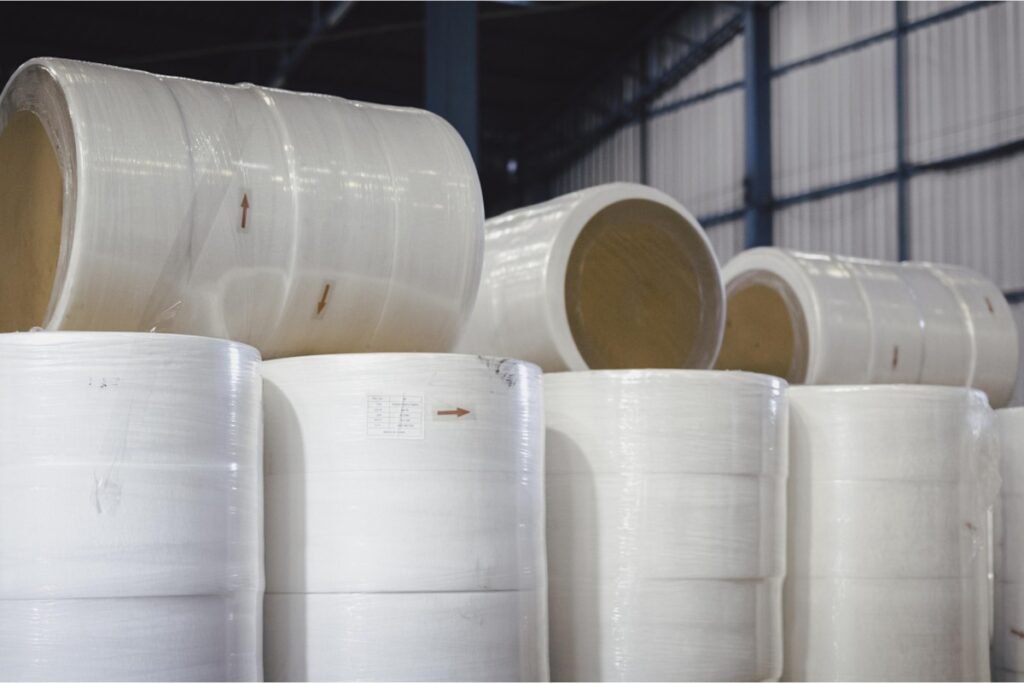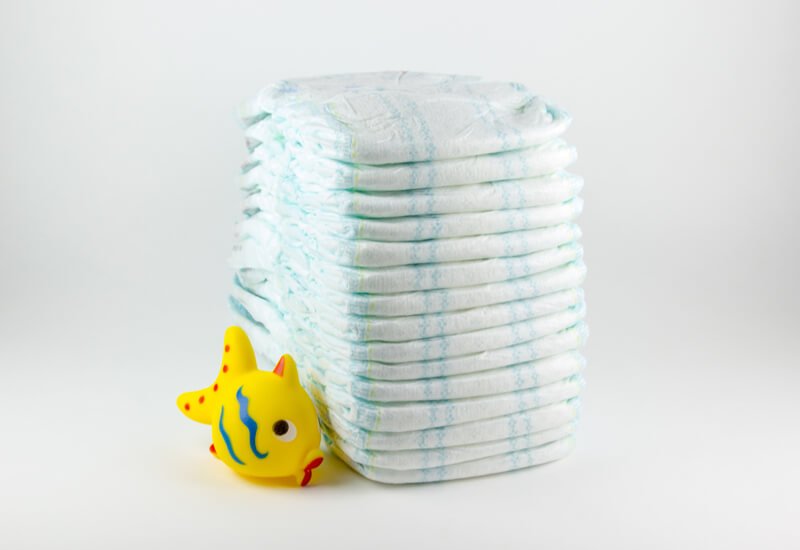В сфере ухода за детьми подгузники являются одним из самых важных продуктов, обеспечивающих здоровье и комфорт малыша. В основе этой индустрии лежит пристальное внимание к выбору подходящих материалов для подгузников. Понимание того, что входит в состав подгузников, помогает выбрать лучший вариант для вашего малыша и подчеркивает важность выбора экологичных и безопасных для кожи материалов.
Оглавление
Важнейшие материалы, определяющие качество подгузников
Основными материалами в конструкции подгузников являются верхний слой, впитывающая основа, подложка и система крепления. Верхний слой, непосредственно соприкасающийся с кожей ребенка, обычно изготавливается из мягких нетканых материалов, отличающихся мягкостью и гипоаллергенностью. Впитывающий слой, часто изготовленный из комбинации пуховой целлюлозы и суперабсорбирующих полимеров (SAP), является основой подгузника, обеспечивая необходимую впитываемость, чтобы ребенок оставался сухим. Вкладыш, обычно водонепроницаемый, как полиэтиленовая пленка, обеспечивает сохранение влаги внутри подгузника. И наконец, система крепления, включающая ленты и резинки, позволяет подгузнику плотно прилегать к телу, обеспечивая комфорт и подвижность.
Передовые материалы, улучшающие характеристики подгузников
Инновации в области абсорбирующих материалов
Инновации в области материалов для подгузников значительно повысили их эффективность. В современных подгузниках используются усовершенствованные SAP, которые способны многократно впитывать жидкость, обеспечивая превосходную сухость. Эти полимеры играют решающую роль в предотвращении протеканий и сохранении комфорта в течение длительного времени.
Дышащие ткани для комфорта
Комфорт имеет первостепенное значение, когда речь идет о подгузниках. Сейчас производители используют дышащие ткани, которые позволяют воздуху циркулировать, снижая риск появления опрелостей. Такие материалы сохраняют кожу сухой и комфортной, что очень важно для чувствительной кожи младенца.
Экологически чистые материалы: На пути к экологичному подгузнику
Биоразлагаемые и органические варианты
С ростом экологической сознательности растет спрос на экологичные решения для подгузников. В производстве подгузников все чаще используются биоразлагаемые материалы, такие как бамбук и органический хлопок. Эти материалы обеспечивают необходимую мягкость и впитываемость, а также снижают воздействие подгузников на окружающую среду.
Устойчивая практика поиска материалов
Экологически рациональное использование материалов - еще один аспект, в котором производители подгузников добиваются значительных успехов. Использование ответственной древесной целлюлозы и обеспечение экологичности производственных процессов - это шаги к более экологичному производству подгузников.
Обеспечение безопасности и комфорта: Материалы имеют значение
Гипоаллергенные и безопасные для кожи варианты
Обеспечение гипоаллергенности и безопасности материалов подгузников для кожи ребенка является первоочередной задачей. Подгузники, не содержащие вредных химических веществ и аллергенов, защищают нежную кожу ребенка.
Контроль качества и сертификация
Меры контроля качества и сертификаты, такие как OEKO-TEXявляются важными показателями безопасности и экологичности подгузников. Эти сертификаты гарантируют, что подгузники прошли тщательные испытания и соответствуют строгим стандартам безопасности и экологичности, обеспечивая спокойствие родителей.
Роль технологий в разработке подгузников
Передовые технологии производства
Передовые технологии в производство подгузников привело к созданию более тонких, впитывающих и удобных подгузников. Инновационные технологии производства позволяют использовать различные материалы для улучшения общих характеристик подгузника без ущерба для безопасности и комфорта.
Умные подгузники: Будущее ухода за младенцами
Интеграция технологий также открыла путь к созданию "умных подгузников". Эти подгузники оснащены датчиками, которые могут предупредить родителей о мокром подгузнике, помогая предотвратить дискомфорт и проблемы с кожей. Такие достижения представляют собой будущее ухода за младенцами, где технологии и комфорт объединяются для обеспечения наилучшего ухода за ними.

В заключение следует отметить, что материалы, из которых изготавливаются детские подгузники, имеют огромное значение. От них зависит не только комфорт и здоровье малыша, но и воздействие продукта на окружающую среду. По мере развития технологий индустрия подгузников может предложить еще более совершенные решения, в которых приоритетом будет здоровье малышей и планеты. Родители и воспитатели должны быть в курсе этих событий, чтобы сделать наилучший выбор в соответствии с потребностями своих детей.

